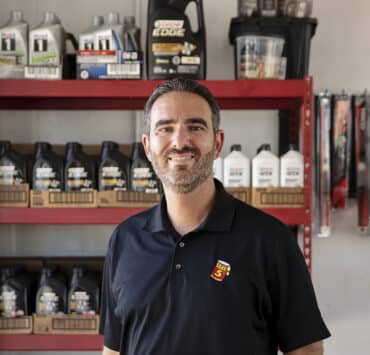|
Getting your Trinity Audio player ready...
|
Since her survey exhibition at the Chicago Cultural Center titled Candida Alvarez: Here, which focuses on the artist’s paintings from 1975 to the present, Candida Alvarez’s name has been plastered all over the art world.
Alvarez is a force to be reckoned with: she boasts an extensive studio practice, stellar teaching career, and now a magnificent position and presence in the national and international art scene. Her work is currently on view at museums, cultural institutions, and collections, and discussions about her practice (as well as critical reviews) are brimming with glory.
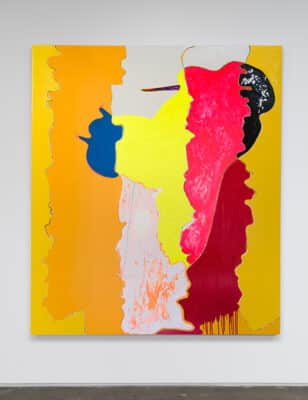
Courtesy of the Artist and Monique Meloche Gallery
This dedicated artist and educator—who was also my mentor during my MFA years—has always demonstrated the tenacity and endurance needed to become the established artist she is today. In this interview, Alvarez and I discuss her current work, recent collaborations, and a trienal named after one of her paintings.
You’ve worked as an artist for more than forty years now. What do you attribute your everlasting love for painting to? What or who inspires the work that you make?
As a material, I love what paint does. The mysteries of light and shadow, color and form—which come directly from observing living and mechanical color coexisting with human interactions—inspire me. The adventure of being on a mysterious path keeps me going.
One of my favorite aspects of your work is that you navigate a wide range of styles, from representation to abstraction. This makes me think about self-classification and the boundaries institutions and galleries place when categorizing an artist’s style. Can you expand on the notions of style and the pressure of classifying one’s work in contemporary art?
I always resisted the labels and always paid more attention to what matters in the painting or drawing space. My work generates from a relationship to ideas, not styles. My practice has grown from the permissions I have given myself to be free to choose. As I was developing as an artist in the ’80s, I saw the radical work of Joseph Beuys, Hilma af Klint, Gerhard Richter, George Baselitz, Romare Bearden, Robert Rauschenberg, Jasper Johns, Elizabeth Murray, Pina Bausch, Feliz Gonzalez Torres, Gordon Matta Clark, David Hammons, and Ana Mendieta, among so many others. They broke the rules and raised the bar—I loved witnessing it all unfold.
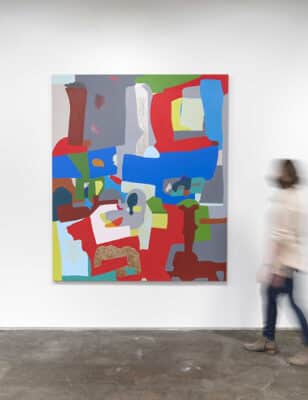
Courtesy of the Artist and Monique Meloche Gallery
It is a great honor for me to exhibit work alongside yours as part of El Museo del Barrio’s first national survey exhibition of Latino contemporary art, Estamos Bien Trienal. How does it feel to have this exhibition named after one of your paintings?
Thank you, Edra! I have a relationship with El Museo that started in the ’70s, and it is a huge honor to be invited back to El Museo as an exhibiting artist with a work that has within its body of making a sound current that has affected so many lives: a repetition, over and over, of the voices of those interviewed by TV crews when asked what they wanted to say to their loved ones waiting for news after Hurricane Maria hit [Puerto Rico] in 2017. To be in the midst of a generation of artists, a few I actually mentored, is exciting and a privilege. It is a bit like visualizing a full circle in the making.
The curatorial gesture was unique and special. So, fundamentally, I was surprised to be invited and excited that I was not the only elder in the room.
You have collaborated with other sensational artists and labels, including with Comme des Garçons on its fall 2017 collection. Can you tell us about the process of working with a fashion designer?
Working with Rei Kawakubo was a memorable experience. I loved seeing my drawings and paintings moving in space around a body.
I curated a series of paintings and drawings from which Rei chose to reproduce and use for select garments in the 2017 Homme Plus and Shirts collections. It was exciting to go with my son to Paris and see the clothes on the runway. Most memorable was seeing Pharrell Williams in a photo by Mario Testino in the December 2017 Vogue wearing one of the prints.
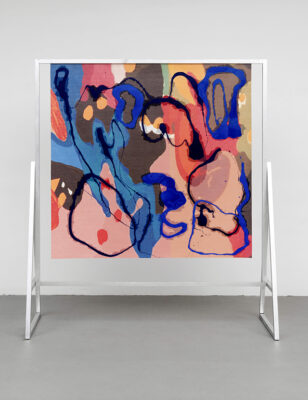
Courtesy of the Artist and Monique Meloche Gallery
As an artist, I constantly think about processes and what takes me from point A to point Z. Can you tell us about your process? What sparks your creativity?
It varies, depending on where I am. If I am not traveling, I like working slowly and intentionally on large-scale paintings. I like drawing for pleasure. I use prismacolor and Derwent watercolor pencils and an iPhone to take photos of anything interesting my eyes notice, so I have a fairly large inventory to draw from. My process is not always linear. Sometimes I have an idea that takes a long time to figure out.
You have used a wide variety of materials, from fabric and thread to collages and upcycled versions of your own work. Are there any particular moments that stand out to you from your development of an art piece or a body of work?
I remember in 1980, I was an artist in residence at the International Studio and Workspace Program PS 1, Contemporary Art Center, LIC, NYC (Renamed: MOMA/PS 1). As part of my instillation in the auditorium located on the third floor, I had to climb an eighteen-foot ladder. My father was there to help and give me courage; he held the ladder while I climbed up. I was applying a black tape line around an arch opening, which would include a large, suspended piece of canvas with a painting that used a collage of fabric and paint.
It was my first solo installation of a painting since an earlier collaborative exhibition at El Museo del Barrio in 1977 entitled Confrontation, Ambiente y Espacio. The piece at PS 1 was called Red Spirit White. It concluded the end of a yearlong residency there, my first studio outside my home. It was memorable.
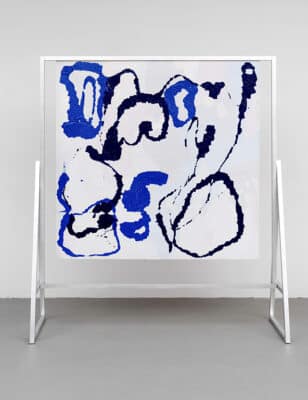
Courtesy of the Artist and Monique Meloche Gallery
I had the fortune of working with you as a grad student and greatly appreciate the defining moments in my own career that your advice prompted. Do you consider teaching to be a valuable influence on your own artistic practice?
I would say my artistic practice is an invaluable influence on my teaching. It has given me the wisdom and patience to understand that this is a choice I have made, and that there never was any guarantee of a financial reward from the sale of work.
Teaching has always provided me with a space for listening and providing guidance. I have valued the numerous conversations I have had with countless artists who now continue to practice and have rich, rewarding careers as well. Teaching gives back quietly, mostly. You don’t always get to know the effect you may have had on others until many years have passed. Of course, there are years of writing letters, which do get results from time to time.
Teaching was a surprise: I never thought I would be doing it for as long as I have. Edra, you were there as a student at the very beginning. What a pleasure to meet you in 1998 as a grad student advisee and share this wonderful friendship over all these years.
What is the best part of being an artist at this moment in time?
So far, I have managed to survive the pandemic, and I treasure the studio time.
Puerto Rican born, Edra Soto is an interdisciplinary artist and codirector of the outdoor project space the Franklin.
Recent venues presenting Soto’s work include Crystal Bridges Museum of American Art’s satellite, the Momentary (Arkansas); Albright-Knox Northland (New York); Chicago Cultural Center (Illinois); Smart Museum (Illinois); and the Museum of Contemporary Photography (Illinois).
Recently, Soto completed the public art commission titled Screenhouse, which is currently at Millennium Park. Soto has attended residency programs at the Skowhegan School of Painting and Sculpture, Beta-Local, the Robert Rauschenberg Foundation Residency, the Headlands Center for the Arts, Project Row Houses, and Art Omi, among others. Soto was awarded the Efroymson Contemporary Arts Fellowship, the Illinois Arts Council Agency Fellowship, the inaugural Foundwork Artist Prize, and the Joan Mitchell Foundation Painters & Sculptors Grant, among others. Between 2019-2020, Soto exhibited and traveled to Brazil, Puerto Rico, and Cuba as part of the MacArthur Foundation’s International Connections Fund.
Soto holds an MFA from the School of the Art Institute of Chicago and a bachelor’s degree from Escuela de Artes Plásticas y Diseño de Puerto Rico.
